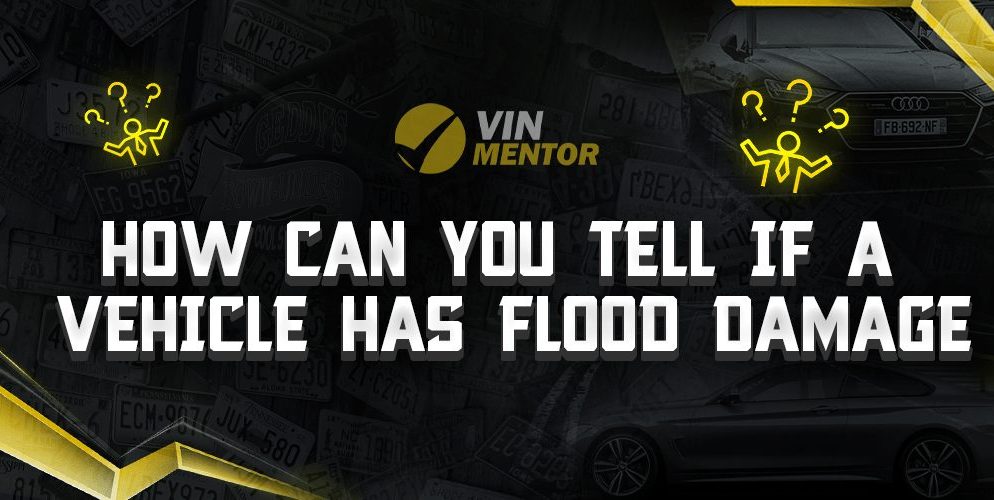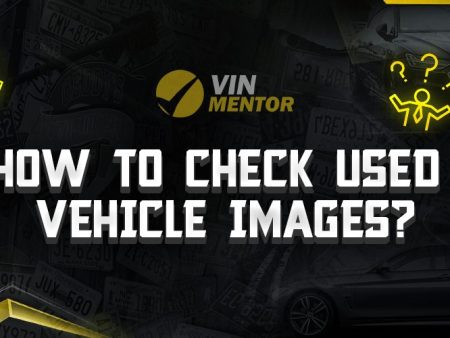

Buying a used vehicle can be a great way to save money, but it’s essential to be aware of potential hidden issues. One such concern is flood damage, which can have long-lasting effects on a vehicle’s performance and safety. So, how can you tell if a vehicle has flood damage? In this article, we will explore key indicators and signs that can help you identify flood-damaged vehicles. Read on to learn more.
Key Takeaways
- Look for water lines, foggy headlights, and mismatched paint, which may indicate flood damage.
- A lingering smell of mildew or mold suggests potential water damage within the vehicle.
- Malfunctioning electronics and illuminated dashboard warning lights could be signs of water infiltration.
- Check for water stains, rust, corrosion, and dampness in upholstery, carpets, and metal parts.
- Conduct a meticulous examination, consider a VIN check for a comprehensive vehicle history report, and consult a trained mechanic to ensure a thorough evaluation.
What Signs Can Indicate that a Vehicle Has Been Affected by Flood Damage?
When considering the purchase of a used vehicle, it is essential to be aware of potential flood damage. Recognizing the signs of water damage can save you from costly repairs and future headaches.
Exterior signs
One of the first areas to examine when assessing flood damage is the vehicle’s exterior. Look for the presence of water lines, which may indicate that the vehicle was submerged or exposed to significant amounts of water. Additionally, inspect the headlights for foggy or hazy conditions, as this could suggest moisture penetration. Lastly, take note of any mismatched paint colors or inconsistencies, as they may indicate recent repairs due to flood damage.
Musty odor
As you step inside the vehicle, pay close attention to any unusual or musty odors. A lingering smell of mildew or mold is a clear indication of potential water damage. Mold thrives in damp environments, so a musty odor could imply hidden moisture within the vehicle. If you notice this distinct smell, it’s important to investigate further.
Electrical issues
Flood damage can significantly impact a vehicle’s electrical system. Malfunctioning electronics, such as malfunctioning power windows, lights, or infotainment systems, should raise suspicions of water damage. Additionally, be attentive to the dashboard for warning lights that remain illuminated, as this could indicate underlying electrical issues caused by water infiltration.
Interior damage
Conduct a thorough inspection of the vehicle’s interior to identify potential flood damage. Look for water stains or discoloration on the upholstery, carpets, and floor mats. These stains can serve as visible evidence of water exposure. Furthermore, check for rust or corrosion on the pedals, seat brackets, or other metal parts within the vehicle, as these can arise from prolonged exposure to moisture. Finally, feel the carpets and seats for dampness or signs of mildew, as these can indicate hidden water damage.
Be vigilant
When assessing a used vehicle for flood damage, it’s crucial to remain vigilant throughout the inspection process. Perform a meticulous examination, paying attention to every detail. If you have any doubts or concerns, consider seeking professional assistance. A trained mechanic or automotive expert can provide a comprehensive evaluation and help you make an informed decision about the vehicle’s condition.
Performing a VIN check
It’s important to note that the signs mentioned above may not confirm flood damage definitively. They serve as indicators or red flags, warranting further investigation. When in doubt, it’s always wise to seek professional help or consider conducting a Vehicle Identification Number (VIN) check.
Performing a VIN check allows you to access a comprehensive vehicle history report, which includes information about any reported flood damage incidents. To ensure the accuracy of the information, it is recommended to utilize reputable VIN check websites. These platforms aggregate data from multiple reliable sources, including insurance records, salvage yards, and government databases, providing a more complete picture of the vehicle’s past.
By remaining diligent, conducting thorough inspections, and considering a VIN check, you can protect yourself from purchasing a flood-damaged vehicle and make a more informed decision. Remember, it is better to prevent potential expensive repairs and safety risks by being proactive in assessing the vehicle’s condition.
Conclusion
When buying a used vehicle, being aware of potential flood damage is crucial to avoid unforeseen problems. By recognizing the signs of water damage, such as exterior water lines, musty odors, electrical issues, and interior damage, you can make an informed decision about the vehicle’s condition. It is important to remain vigilant during the inspection process and seek professional assistance if needed. Additionally, conducting a VIN check enables you to obtain a detailed vehicle history report that encompasses any documented instances of flood damage. To ensure accuracy, consider using reputable VIN Check Websites from our recommended list. By taking these precautions, you can protect yourself from purchasing a flood-damaged vehicle and avoid costly repairs and safety risks.
FAQ
How common is flood damage in used vehicles?
Flood damage in used vehicles can occur, but its prevalence can vary depending on factors such as the region, climate, and local flooding incidents. While it’s challenging to determine an exact percentage, it’s essential for buyers to be cautious and thoroughly inspect any used vehicle for potential signs of flood damage.
Can flood damage be repaired, or is it a permanent issue?
The extent of flood damage and whether it can be repaired depend on various factors, including the severity of the water exposure and the timeliness and effectiveness of the restoration efforts. While some vehicles with flood damage can be repaired and restored to a safe and functional condition, others may have long-lasting issues that are difficult or costly to fix. It’s crucial to assess the extent of the damage and consult with a professional mechanic to determine the feasibility of repairs.
Are there specific regions or areas more prone to flood-damaged vehicles?
Certain regions or areas that are prone to natural disasters like hurricanes, heavy rainfall, or flooding incidents may have a higher likelihood of flood-damaged vehicles being sold in the used car market. However, it’s important to note that flood-damaged vehicles can be found in any location, as they can be transported or sold across different regions.
Can a vehicle with flood damage still be safe to drive?
While it’s possible for a flood-damaged vehicle to be restored to a safe driving condition, there are inherent risks associated with water damage. Water can cause significant electrical and mechanical issues, affecting critical components like the engine, brakes, and airbags. Even if repairs are conducted, there may still be lingering effects or hidden damage that could compromise the vehicle’s safety. It’s crucial to have a thorough evaluation by a trained mechanic to ensure the vehicle’s safety before considering a purchase.
Are there any additional precautions to take when buying a used vehicle to avoid flood damage?
In addition to the indicators mentioned in the article, it’s important to take some extra precautions when buying a used vehicle to minimize the risk of flood damage. For example, consider researching the vehicle’s history, including its ownership records, service records, and any reported accidents or insurance claims. A comprehensive vehicle history report, obtained through a VIN check, can provide valuable information about the vehicle’s past, including any reported flood damage incidents. It’s also advisable to have an independent mechanic or automotive expert perform a pre-purchase inspection to ensure a thorough evaluation of the vehicle’s condition.












